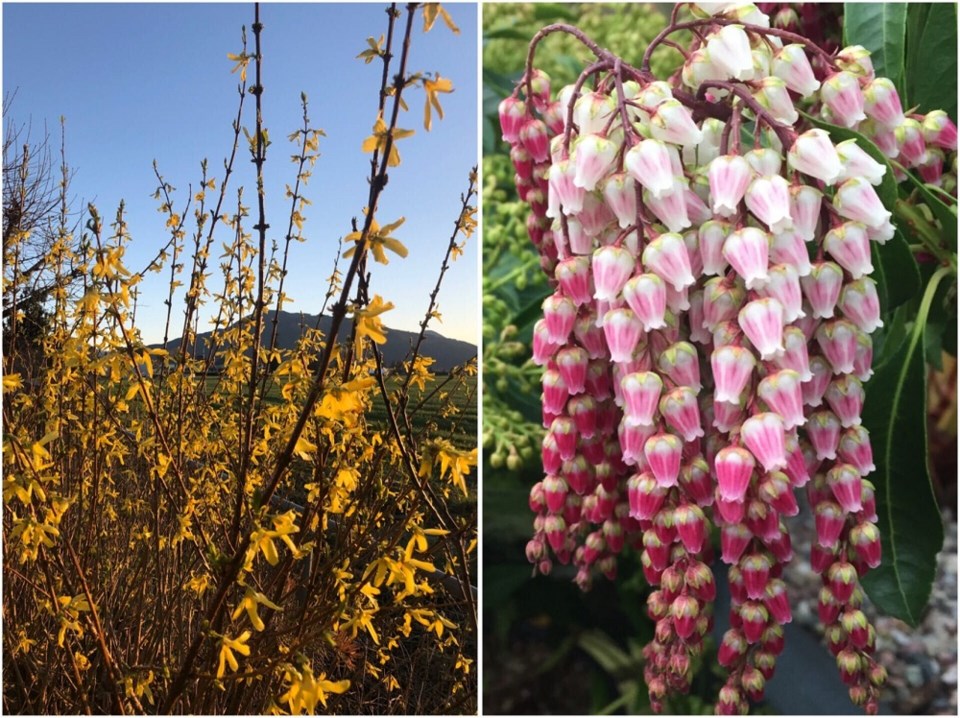With spring finally here and bringing along some warmer temperatures, Easter weekend is a great time to start adding some outdoor colour.
We all tend to admire the beautiful early flowering cherries, stunning magnolias and many lavender and purple rhododendrons, like the diverse selection of the P.J.M.’s now in bloom.
This early show of colour always lifts our spirits and adds a spark to the rather bleak winter landscape we’ve been living with for the past four or five months. It can also provide much needed pollen and nectar for many birds and pollinators that are out now, and they’re hungry.
A few weeks ago, the return of robins and many of our other local species of birds brought another level of enjoyment to our gardens, and an increased appreciation of the natural beauty around us.
With the current serious avian flu situation, we should not be putting out bird feeders, but rather, adding plants to our gardens to provide natural food sources for them. Early blooming Korean lilacs, Florida dogwoods and even Virginia Creeper on fences and walls all provide food and shelter for birds. The red flowering currant ribes sanguineum King Edward is a favourite for hummingbirds.
Winter flowering heathers on a warm day will be smothered with bees looking for nectar and pollen. As our first flowering fruit trees, like peaches, are now in bloom, they are needed to help pollinate.
As a matter of fact, all our early flowering perennials provide a rich source of food for a wide variety of pollinators.
Iberis, or white candytuft, purple, pink and white aubrieta, or Rock Cress, pulsatillas, also called Prairie Crocus, and armeria all help transition our winter gardens with a splash of bright colour. Evergreen euphorbias are also now gently bending over their flower tips to push out the most amazing chartreuse flowers that last for months.
And yes, they attract pollinators, too.
For a repeat display of vibrant colour and a great source of pollination each year, the importance of planting species and botanical bulbs cannot be overstated.
I’m a huge fan of pieris japonica, often called the Lily of the Valley shrub. Their beautiful flower trusses in pinks and whites are a bumblebee favourite. Few other shrubs provide such amazing year-round colour, in both sun and shade. I always love the spectacular colour they add when the new growth explodes into all shades of red, burgundy, and bronze in early spring.
The splashy yellow forsythia is Mother Nature’s starting pistol announcing the beginning of the spring planting season. They too are an excellent source of pollen and nectar for early garden pollinators.
It’s time to look at our gardens in quite a different way.
Not only do we add colour to lift the neighbourhood’s spirits, but we are also recreating a more natural habitat for so many birds and beneficial insects.



